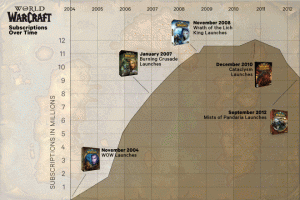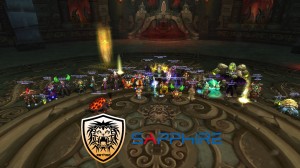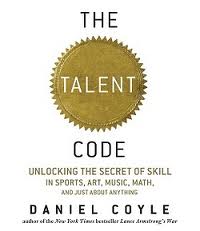Rozalia Zeibeki
English Composition I: Achieving Expertise
Prof. Denise Comer
Area of Expertise: Video games and gamification
Case study: World of Warcraft EU-Guild “Method” @Twisting Nether
A glimpse at the world of expert gamers:
World of Warcraft’s “Method” @Twisting Nether
The gaming industry has had a prolific past decade. The revenues from gaming titles, memorabilia and marketed products have surpassed expectations. Blizzard / Activision Inc. is one of those gaming conglomerates and the producer of the world’s most popular MMO RPG[1], called “World of Warcraft” [2], the ongoing saga between Alliance and Horde forces. Despite the fact that recent spring quarter statistics have shown a decrease in subscribers, the game still boasts a staggering 9 million subscription base. Multiply that by approximately 14 euros per month plus other sources of income (e.g. in-game purchase options) and you have yourself a multi-million dollar business.
Figure 1 World of Warcraft Subscription numbers over the course of its expansions.
Source: Activision / Blizzard – Illustration: Ross Patton/ Wired [3]
Players tend to put their money to good use; an average hardcore Wow player sacrifices eight or more hours in a row to achieve grandeur. A social player, who is somewhat less engaging, will also roam the digital world of Azeroth for a good two hours on average, each time he logs in the game. Method guild members belong to the extreme hardcore player body and are sponsored by major companies, thus being rendered “professional” gamers.
The goals of the game are substantially diverse but it all accumulates to “raiding” and facing a “world boss” of ultimate level difficulty. In order to do that, you basically need to cooperate with other people in the game, usually within a guild [4]. Bainbridge portrays the process of players entering one:
“… First, they may form a guild from scratch, and often a successful guild is formed by a group of people who are already friends, sometimes even members of the same real-world family. Second, guilds that are trying to grow may advertise on the guild-recruiting channel of the chat system; depending on how selective they are, even a halfhearted expression of interest may result in a formal invitation to join. Third, a member of a guild may share quests or other experiences with a nonmember, come to see that person as competent and trustworthy, and extend an invitation on the basis of extensive familiarity based entirely on in-game interactions.” [5]
Method@ Twisting Nether
Method is a European based guild playing on a server called Twisting Nether ( EN- PVP)[2] . Former Alliance, now belonging to the Horde faction, they are basically a 25-man raid guild; that is they focus on combatting raid bosses with a solid group comprising of 25 people as opposed to opting for the alternative 10-man raid model. Coordinating 25 people in a long boss fight where game mechanics demand high levels of dexterity and leadership is difficult in itself; being the first in the WoW universe to achieve downing a boss qualifies for gaming “expertise”.
There has been much debate whether a 25-man kill is actually harder than a 10-man raiding regime. Method’s main antagonists are a Finnish guild called DREAM-Paragon; they have currently switched from 25-man to the 10-man model and are respectively topping the progression charts in the world. Method’s reply, during a 5.1 patch[3] interview:
“What’s your take on 10-man vs 25-man World Firsts?
Artzie: Personally I don’t think you can compare 10man to 25man. Out of all these bosses I’ve ever met in WoW, the only one that was harder in 10man was Sartharion 3D. It’s just wrong to compare 10man with 25man. […] [6]
Methods for “Method”
Finding 25 players to follow an excruciating raiding schedule up until the wee hours of the morning is hardly a walk in the park. This is why their roster is not the same from the guild’s initial formation. To fill out the missing group slots, they recruit the best Wow players out there. In order to be “drafted” in such a raiding guild, you have to boast substantial experience, evidence of knowing to play your class[4] well up to par and finally fill out the correspondent application form on their webpage. [8]
After having the appropriate guild members selected before each patch comes out, the guild enters the PTR Phase. PTR stands for Public Test Realm, so it’s the game publisher’s way of testing new content and making sure everything is running smoothly. End-game guilds like Method access the experimental realms, utilize the latest changes and basically run against the clock in their attempt to be the first to down Blizzard’s animated evil caricatures in the entire 9-million community.
Raiding comprises of defeating many bosses in a row, thus they take it one boss at a time. In case something goes wrong during the encounter, the guild leader usually decides to “wipe” it. That means they all let their avatars die on purpose and restart the combat. The reason is that if game mechanics are not meticulously followed from the start, then no matter how well prepared the raid team is the final outcome will eventually be negative. Achieving a raid kill might come after numerous “wipes” – double digit ones at times– something which has a tremendous nerve-wracking effect on most casual players. Moreover, the whole process of learning through trial and error is awfully time-consuming. Raiding usually commences late in the evening and could carry on until dawn. Top notch guilds engage in raiding for days on end, so it’s basically play, sleep, eat, then play again; tons of energy drinks are also involved in the process. In his article, Geoffrey Colvin insists that this is actually the road to take if you want to become the best in any sector. He suggests:
“The best people in any field are those who devote the most hours to what the researchers call “deliberate practice.” It’s activity that’s explicitly intended to improve performance, that reaches for objectives just beyond one’s level of competence, provides feedback on results and involves high levels of repetition.” [9]
Coyle similarly recounts of a “deep practice” as a paced path to shaping excellence and talent and constant self-improvement through errors and repetitiveness. [10] The term qualifies for Method’s method to be honest – they recently concluded the Throne of Thunder raid instance by killing the boss, “Ra Den” [8], after two attempts alone. During patch 5.1 raid instance, it took them 108 (!) efforts to down the “Will of the Emperor”. [6] I guess practice makes perfect, indeed.
Figure 2 Ra Den 25m World’s 1st by Method [8]
Works cited:
- “Massively multiplayer online role-playing game.” Wikipedia. Wikimedia Foundation. 25 May 2013. Web. Retrieved 26 May 2013 from http://en.wikipedia.org/wiki/Massively_multiplayer_online_role-playing_game
- “World of Warcraft”. Wikipedia. Wikimedia Foundation. 20 May 2013. Web. Retrieved 26 May 2013 from http://en.wikipedia.org/wiki/World_of_Warcraft
- Kohler, C. “World of Warcraft Has Lost Its Cool”. Wired. 27 September 2012. Web. Retrieved 26 May, 2013 from http://www.wired.com/gamelife/2012/09/mists-of-pandaria/
- “Guild”. WowWiki. Wikia.Inc. 26 August 2012. Web. Retrieved 27 May 2013 from http://www.wowwiki.com/Guild
- Bainbridge, W. S. “The Warcraft Civilization: Social Science in a Virtual World”. London: MIT Press. 2010. Print
- Grace, O. “Top guild Method discusses their World First”. Wow Insider. AOL Inc. 1 November 2012. Web. Retrieved 27 May 2013 from http://wow.joystiq.com/2012/11/01/top-guild-method-discuss-their-world-first/#continued
- “Class”. WowWiki. Wikia Inc. 21 May 2013. Web. Retrieved 27 May 2013 from http://www.wowwiki.com/Class
- “Method”. Method Network. Web. Retrieved 27 May 2013 from http://www.methodwow.com/board/content.php
- Colvin, G. “What It Takes to be Great.” Fortune. 19 October 2006. Web. Retrieved 27 May 2013 from http://money.cnn.com/magazines/fortune/fortune_archive/2006/10/30/8391794/index.htm
- Coyle, D. “The Talent Code. Greatness Isn’t Born. It’s Grown. Here’s How”. New York: Bantam. 2010. Print.
[1] “Massively multiplayer online role-playing game (MMORPG) is a genre of role-playing video games or web browser based games in which a very large number of players interact with one another within a virtual game world.” [1]
[2] “Twisting Nether” is a World of Warcraft European (EU) public realm. Main language featured in general chat and trade channel is English (EN). This is a PvP server, meaning that anytime you encounter a player from the hostile faction in open space, he/she is able to attack you or vice versa regardless each one’s level of ability or combat readiness mood.
[3] “Patches” are small updates in the game, usually releasing extra content and bug fixes. Blizzard has currently released patch 5.3. for WoW as of 21st May 2013.
[4] “A class is the primary adventuring style of a player character which determines the type of weapons and armor it can use, as well as what abilities, powers, skills, and spells it will gain throughout its adventures.” [7] There are currently 11 classes in Wow: Death Knights, Druids, Hunters, Mages, Monks, Paladins, Priests, Rogues, Shamans, Warlocks and Warriors.



